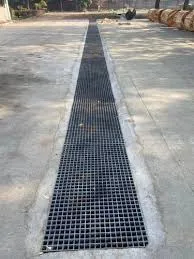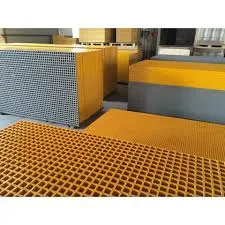
-
 Afrikaans
Afrikaans -
 Albanian
Albanian -
 Amharic
Amharic -
 Arabic
Arabic -
 Armenian
Armenian -
 Azerbaijani
Azerbaijani -
 Basque
Basque -
 Belarusian
Belarusian -
 Bengali
Bengali -
 Bosnian
Bosnian -
 Bulgarian
Bulgarian -
 Catalan
Catalan -
 Cebuano
Cebuano -
 China
China -
 China (Taiwan)
China (Taiwan) -
 Corsican
Corsican -
 Croatian
Croatian -
 Czech
Czech -
 Danish
Danish -
 Dutch
Dutch -
 English
English -
 Esperanto
Esperanto -
 Estonian
Estonian -
 Finnish
Finnish -
 French
French -
 Frisian
Frisian -
 Galician
Galician -
 Georgian
Georgian -
 German
German -
 Greek
Greek -
 Gujarati
Gujarati -
 Haitian Creole
Haitian Creole -
 hausa
hausa -
 hawaiian
hawaiian -
 Hebrew
Hebrew -
 Hindi
Hindi -
 Miao
Miao -
 Hungarian
Hungarian -
 Icelandic
Icelandic -
 igbo
igbo -
 Indonesian
Indonesian -
 irish
irish -
 Italian
Italian -
 Japanese
Japanese -
 Javanese
Javanese -
 Kannada
Kannada -
 kazakh
kazakh -
 Khmer
Khmer -
 Rwandese
Rwandese -
 Korean
Korean -
 Kurdish
Kurdish -
 Kyrgyz
Kyrgyz -
 Lao
Lao -
 Latin
Latin -
 Latvian
Latvian -
 Lithuanian
Lithuanian -
 Luxembourgish
Luxembourgish -
 Macedonian
Macedonian -
 Malgashi
Malgashi -
 Malay
Malay -
 Malayalam
Malayalam -
 Maltese
Maltese -
 Maori
Maori -
 Marathi
Marathi -
 Mongolian
Mongolian -
 Myanmar
Myanmar -
 Nepali
Nepali -
 Norwegian
Norwegian -
 Norwegian
Norwegian -
 Occitan
Occitan -
 Pashto
Pashto -
 Persian
Persian -
 Polish
Polish -
 Portuguese
Portuguese -
 Punjabi
Punjabi -
 Romanian
Romanian -
 Russian
Russian -
 Samoan
Samoan -
 Scottish Gaelic
Scottish Gaelic -
 Serbian
Serbian -
 Sesotho
Sesotho -
 Shona
Shona -
 Sindhi
Sindhi -
 Sinhala
Sinhala -
 Slovak
Slovak -
 Slovenian
Slovenian -
 Somali
Somali -
 Spanish
Spanish -
 Sundanese
Sundanese -
 Swahili
Swahili -
 Swedish
Swedish -
 Tagalog
Tagalog -
 Tajik
Tajik -
 Tamil
Tamil -
 Tatar
Tatar -
 Telugu
Telugu -
 Thai
Thai -
 Turkish
Turkish -
 Turkmen
Turkmen -
 Ukrainian
Ukrainian -
 Urdu
Urdu -
 Uighur
Uighur -
 Uzbek
Uzbek -
 Vietnamese
Vietnamese -
 Welsh
Welsh -
 Bantu
Bantu -
 Yiddish
Yiddish -
 Yoruba
Yoruba -
 Zulu
Zulu
Feb . 16, 2025 01:15
Back to list
Gratings & Covers
In the industrial landscape, the evolution of valve technology has been marked by significant innovations, among which the development of FRP (Fiberglass Reinforced Plastic) valves stands out. This article details the benefits and applications of FRP valves, revealing why they are a top choice for industry professionals seeking reliability, performance, and efficiency for their fluid management systems.
Authoritativeness in the FRP valve sector is bolstered by extensive research and development. Leading manufacturers continuously invest in innovation to improve valve designs and materials, ensuring that they meet international safety and quality standards. This commitment to excellence has earned FRP valves certifications from globally recognized bodies, enhancing their credibility and making them a trusted choice for industry professionals worldwide. The extensive testing that FRP valves undergo before market release also guarantees that they meet stringent operational criteria, further establishing their reputation as reliable components in fluid management systems. Trustworthiness is further solidified by user testimonials and case studies that highlight the real-world applications and successes of FRP valves. Many industry professionals report enhanced operational efficiencies and significant cost savings after transitioning to FRP solutions. These valves not only withstand challenging environments but also contribute to environmental sustainability by reducing the likelihood of leaks and failures that could result in harmful spillages. Moreover, the lightweight nature of FRP valves simplifies installation and handling processes. Unlike heavier metal alternatives, these valves are easier to maneuver, requiring less manpower and equipment during installation. This feature is particularly beneficial in large-scale industrial installations, where the ease of transport and installation can translate into significant labor and time savings. In conclusion, FRP valves represent a pinnacle of innovation in valve technology, offering unmatched benefits to a diverse range of industries. Their chemical and mechanical resilience, combined with customizable designs and adherence to international standards, make them an optimal choice for modern fluid management needs. As industries continue to demand robust, efficient, and cost-effective solutions, FRP valves stand as a testament to the power of advanced materials and engineering expertise in transforming industrial processes.


Authoritativeness in the FRP valve sector is bolstered by extensive research and development. Leading manufacturers continuously invest in innovation to improve valve designs and materials, ensuring that they meet international safety and quality standards. This commitment to excellence has earned FRP valves certifications from globally recognized bodies, enhancing their credibility and making them a trusted choice for industry professionals worldwide. The extensive testing that FRP valves undergo before market release also guarantees that they meet stringent operational criteria, further establishing their reputation as reliable components in fluid management systems. Trustworthiness is further solidified by user testimonials and case studies that highlight the real-world applications and successes of FRP valves. Many industry professionals report enhanced operational efficiencies and significant cost savings after transitioning to FRP solutions. These valves not only withstand challenging environments but also contribute to environmental sustainability by reducing the likelihood of leaks and failures that could result in harmful spillages. Moreover, the lightweight nature of FRP valves simplifies installation and handling processes. Unlike heavier metal alternatives, these valves are easier to maneuver, requiring less manpower and equipment during installation. This feature is particularly beneficial in large-scale industrial installations, where the ease of transport and installation can translate into significant labor and time savings. In conclusion, FRP valves represent a pinnacle of innovation in valve technology, offering unmatched benefits to a diverse range of industries. Their chemical and mechanical resilience, combined with customizable designs and adherence to international standards, make them an optimal choice for modern fluid management needs. As industries continue to demand robust, efficient, and cost-effective solutions, FRP valves stand as a testament to the power of advanced materials and engineering expertise in transforming industrial processes.
Next:
Related Products









